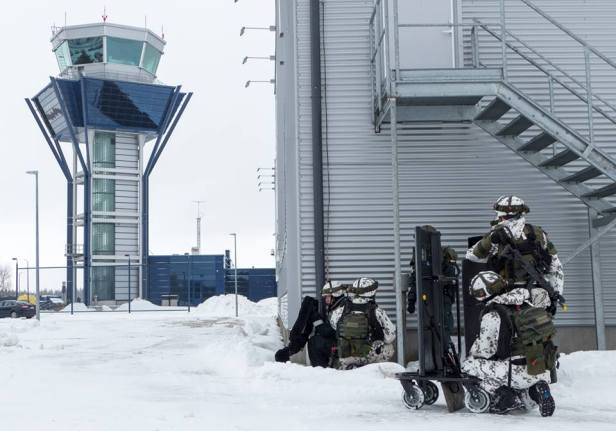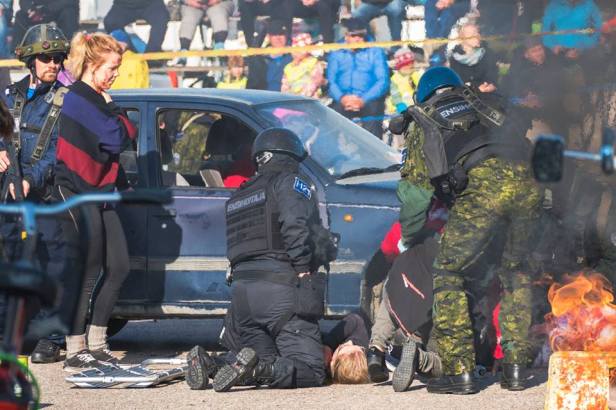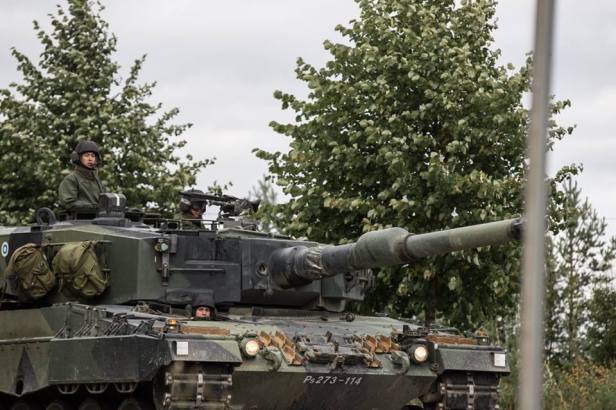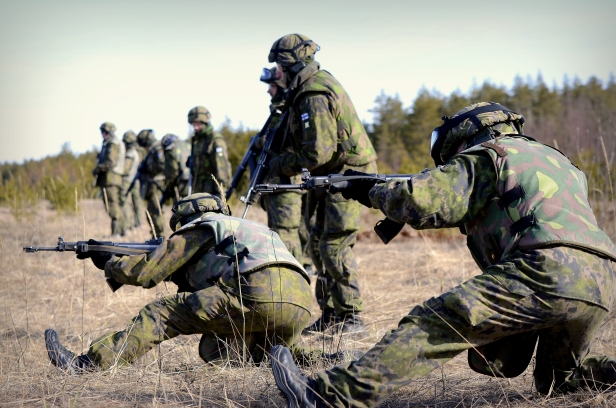An unidentified foreign aircraft touches down at Oulunsalo Airport. As the Finnish Border Guard personnel close in on the now parked aircraft, the situation escalates. A firefight erupts, leaving one border guard wounded and causing a hostage situation. Soon some of the mysterious intruders spread out and try to take over the control tower at the airport. The local border guards realise that the situation is getting out of control, and call for support. The Army and the police (arriving in a borrowed Pasi APC) manage to turn the table, first evacuating the casualty and then storming the tower.

This is a textbook example of so called hybrid war, the kind of operation that has occupied western military thinkers since the Russian invasion of Crimea in the early days of 2014. The scenario described above was the one used for local defence exercise OULU17 in March 2017. The sudden appearance of little green men in unsuspecting locations deep behind the borders have rightfully been seen as a new(ish) threat which require new solutions to counter efficiently.
But what if the counters are in place? If the defence forces have the required units on standby, establishing superiority over a handful of soldiers cut off from their homeland is far from an impossible task. Of course, landing more little green men is a possibility, but sooner or later you reach the point when you just have to ask if the whole “hybrid” thing is really worth it compared to a traditional all-out strategic strike?

The Finnish hard-counter has been the creation of the Army’s new readiness units (Fi. valmiusyksiköt), as well as an update to Finnish laws earlier this summer, meaning unmarked military units entering the country are nowadays treated as criminals, and the local police will arrest any survivors of a scenario such as the one described above.
The readiness units were born out of the realisation that the Army’s dependence on mobilising reserves to counter a rapidly developing situation might simply not be fast enough, and that the professional Erikoisjääkärit special operations forces at Utti Jaeger Regiment might not have the numbers to deal with an incursion. Finnish law does allow for the use of serving conscripts for live missions, provided that they have adequate training for the mission at hand (this in itself constitutes a reinterpretation of earlier laws which took place post-Crimea). The issue comes down to the fact that the majority of Finnish privates serve the minimum time of just short of half a year. Combined with the fact that new conscripts enter service twice annually (in January and July) there are clear time gaps during which there are no adequately trained conscripts (roughly the first and third quarters). In many cases your run-of-the-mill company designed to work as a part of a bigger unit on the conventional battlefield might also not be ideally suited for independent operations of the kind required here.
Enter the readiness unit, a unit in which volunteer conscripts get training in additional weapons systems, advanced small unit tactics, urban operations, and heliborne insertion/extraction. The service time is 347 days (the longest possible for conscripts), and the units are lead by regular professional staff.

What is interesting is that while much of the focus has been on their role as light airmobile force to provide fire support to the police in case of little green men popping up on the Åland Islands, the fact is that they are indeed fully functioning army units. This includes the full range of weaponry in use by Finnish infantry, such as anti-tank missiles, but also support from other branches such as armoured units.
The armour is an especially interesting case, as both Leopard 2A4’s and CV 9030’s played a prominent role during exercise KYMI217 recently. Readers of the blog will remember that the Army transferred a number of older 2A4’s from the Armoured Brigade to other units last year following the introduction of the 2A6. Ostensibly, these were mainly meant for OPFOR duty and to provide an in-house ability to train combined arms operations, but it is also clear that they provide the capability to quickly raise armoured units in different geographical areas.

If the readiness units represent the high-end when it comes to meeting a hybrid war, the lower end of the spectrum include the local units (Fi. Maakuntajoukot and Paikallisjoukot). While the local forces take a longer time to mobilise than the readiness units and feature older and lighter equipment, they provide geographical coverage throughout the country (with the exception of the Åland Islands) and enough firepower to be able to quickly take up the fight with any enemy forces suddenly appearing behind the lines, and thus buy time until the cavalry arrives (which could very well be a readiness unit).

To sum it up, far from just being light fire brigades to take down little green men, the readiness units are equipped to be able to counter the whole spectrum of modern military threats. When also including the local forces, the Finnish Army is able to field a layered approach to any threat which might appear suddenly and in unexpected locations, be they hybrid or traditional.


Comments are closed.